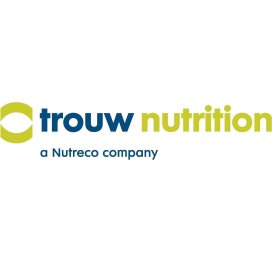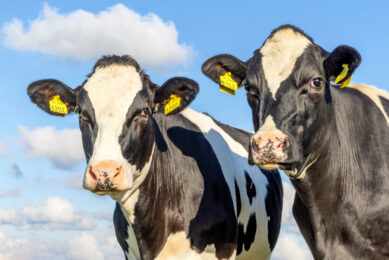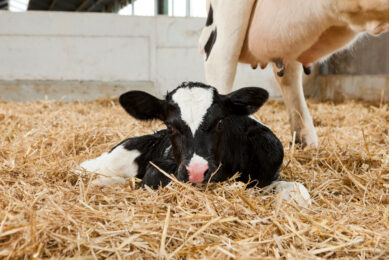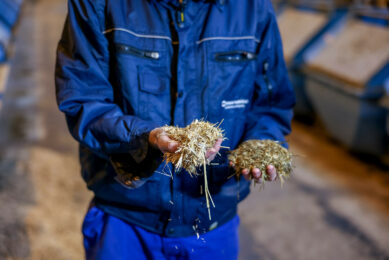The journey to building a sustainable dairy cow
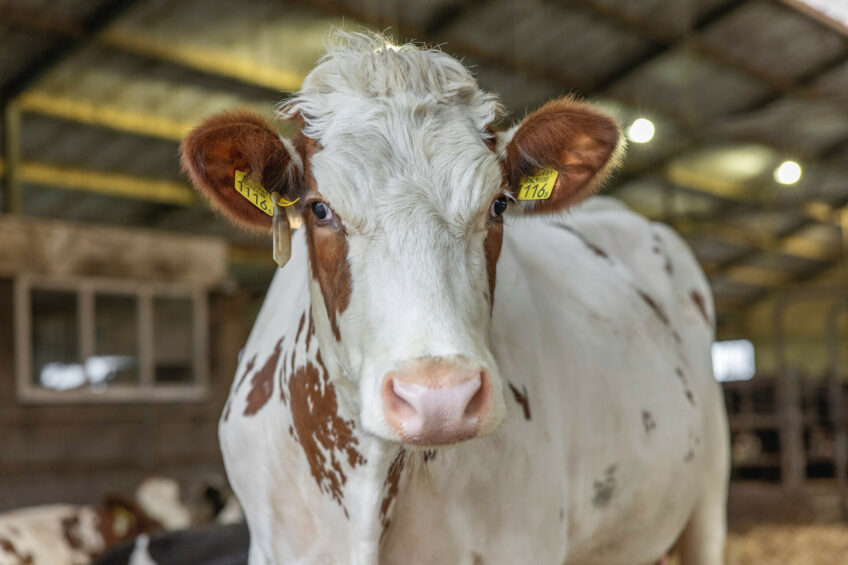
Small pieces always come together to create the big picture. And this is also true for building a sustainable dairy cow. This was one of the conclusions drawn from DairyNutriVision, a new global event organised by Trouw Nutrition and Selko.
This event, which took place in the Netherlands from 10-12 September 2024, dived into the latest scientific breakthroughs and innovative approaches to sustainable dairy farming, from youngstock to lactating cows.
But what is sustainability and where do we start? If you ask 10 people what ‘sustainability‘ means, you will probably get 10 different answers. “In our opinion, sustainability in (dairy) farming is about animal health and wellbeing, the environment and circularity, and farm financial stability. All these elements should be considered, and this is why we are constantly investing in nutritional knowledge and novel tools and products to do so,” explained JJ Degan, global strategic marketing manager dairy at Trouw Nutrition, at the opening day of the event.
“Powerful interventions that are currently available range from better calf and heifer rearing, applying precision nutrition for different lactation groups via accurate modeling, optimising trace mineral recommendations, and more. And while every farm is on a different step in their sustainability journey, every step counts. As long as you are committed to start the journey,” said Degan.
Focus on calf nutrition and rearing
As many would agree, building a sustainable dairy cow starts with the calf. Robust and ongoing LifeStart research from Trouw Nutrition has already changed the narrative around calf nutrition and milk replacer composition.
Eile van der Gaast, product manager calf milk replacers at Trouw Nutrition, explained the backbone of LifeStart’s success: “For a long time, we used to think that the phenotype and performance of a dairy cow is the sum of genetics and environment. But we have learned that there is an important extra factor we must include here: epigenetics. Epigenetics is the study of changes in gene activity that do not involve alterations to the genetic code but still get passed down to at least one successive generation. Calf rearing is affected by epigenetic marks linked to nutrition. In this way, early-life nutrition can program the metabolism for later life health and performance.“
And science continues. Van der Gaast: “Adjusting feeding levels and practices is important. But we also learned more recently about the importance of getting the nutritional profile (such as the fatty acid profile) of calf milk replacers right. This is key to better meet the biological needs of the calves and promote better gastrointestinal and rumen development, for example. This has positive effects on age at first calving and cow longevity, for example. We simply have more milk to sell and fewer heifers to raise. And this is not only more profitable but also more sustainable.”
Fine-tuning mineral guidelines
Building the sustainable dairy cow is also about productivity. A higher milk yield per cow does not only have economic advantages, but is also often considered an important strategy to decrease greenhouse gas emissions per kg of milk produced.
Dr Jean-Baptiste Daniel, ruminant researcher at Trouw Nutrition, explained: “Trace minerals – zinc, manganese, calcium, and iron – have a key role in maintaining long-term productivity in dairy cows. While supplementing too little can reduce health and productivity, we must be careful not to overfeed certain trace minerals, as this can be toxic for the animal, but also lead to higher amounts of unused trace minerals in the faces and urine, hence negatively affecting the environment. Too little can reduce health and productivity.
“At Trouw Nutrition, we are constantly working on better defining the dietary guidelines for trace minerals, based on the research, and modelling we do on gut absorption and efficiency. We also look at which type of animal we are feeding, based on age, production level, and dry matter intake levels, for example. If we know better what the optimal absorption efficiencies are to maintain optimal health and production, we can translate this to practice. This fine-tuning in trace mineral supplementation – and choosing an efficient source of trace minerals, such as Selko IntelliBond hydroxy trace minerals, helps to do more with less and hence supports sustainability.”
Dr José Santos from the University of Florida in the US highlighted a recent transition cow study comparing sulfate and hydroxy trace minerals, fed at the same levels pre and post-partum. The hydroxy trace minerals improved milk solids in colostrum and milk yield. This group also performed better in terms of disease incidence, which led to lower culling rates and better fertility, compared to the cows that received sulfates-based trace minerals.
Controlling immunity and different stressors
Prof Dr Lance Baumgard from Iowa State University in the US noted that sustainability is also very much about healthy cows, which is strongly linked with immunity and stress reduction. “And this is particularly relevant in transition cows, as these animals undergo an enormous range of metabolic changes at the same time. As an example, we see that subclinical ketosis is still the number one economical disease and reason behind culling, which has not changed over the years. We should be able to better control and fix this in our quest to build a sustainable dairy cow. Better understanding and influencing immune-suppression mechanisms and reducing stressors are the keys to success here. Baumgard explained that different stressors (such as heat stress) can lead to, among other issues, leaky gut. Studies also showed that transport stress can increase Clostridia and E. coli shedding in cattle.
Prof Dr Geoffrey Dahl from the University of Florida in the US elaborated a bit more on heat stress and mentioned that when heat stress occurs in late gestation it can have negative effects on the offspring. Calves have a lower birth weight, for example, which can impact survivability and negatively effects on long-term milk production and longevity. These effects can even be passed on the calf’s offspring, negatively impacting the next generation.”
Dr Victoria Sanz-Fernandez, ruminant researcher at Trouw Nutrition, further addressed the importance of stress reduction to maintain gastrointestinal health. “It is important to recognise that the hindgut of dairy cows is affected by similar factors, as compared to the rumen. Supporting post-rumen health is an opportunity to improve performance and health, the backbones of a sustainable dairy cow,” she said.
Sustainability: short and long-term actions
As mentioned, sustainability is not about applying one measure or changing one thing only. Even marginal improvements lead to big gains, especially when you add them up. And this vision was reflected nicely in the presentation of Dr Liz Homer, sustainability manager ruminants ECA at Trouw Nutrition. She emphasised that sustainability is all about taking a holistic approach, from calf to fifth lactation (and beyond). “If we get calf rearing right, establishing solid growth levels in the first months, this will be translated to more milk, less culling rates, longer lactations, and fewer health issues, among others.”
Homer also noted that feed is contributing largely to the total carbon footprint of milk. “Precision nutrition, use of (methane-reducing) additives and different sourcing of raw materials can all have a huge effect. However, to make the right decisions to reformulate diets, it is important to have accurate feed data in the carbon footprint calculations tools. In addition, we must know what to do with these carbon footprint numbers to make an action plan moving forward. MyFeedPrint and MyMilkPrint are fitting examples of easy-to-use and accurate LCA services that help dairy farmers get these insights and start their journey towards building a sustainable dairy cow. Changes made in the diet can have a quick effect already on the carbon impact, while the effects of other measures such as prolonging longevity and reducing replacement rates are more mid-longer term,” Homer concluded.
Join 13,000+ subscribers
Subscribe to our newsletter to stay updated about all the need-to-know content in the dairy sector, two times a week.


